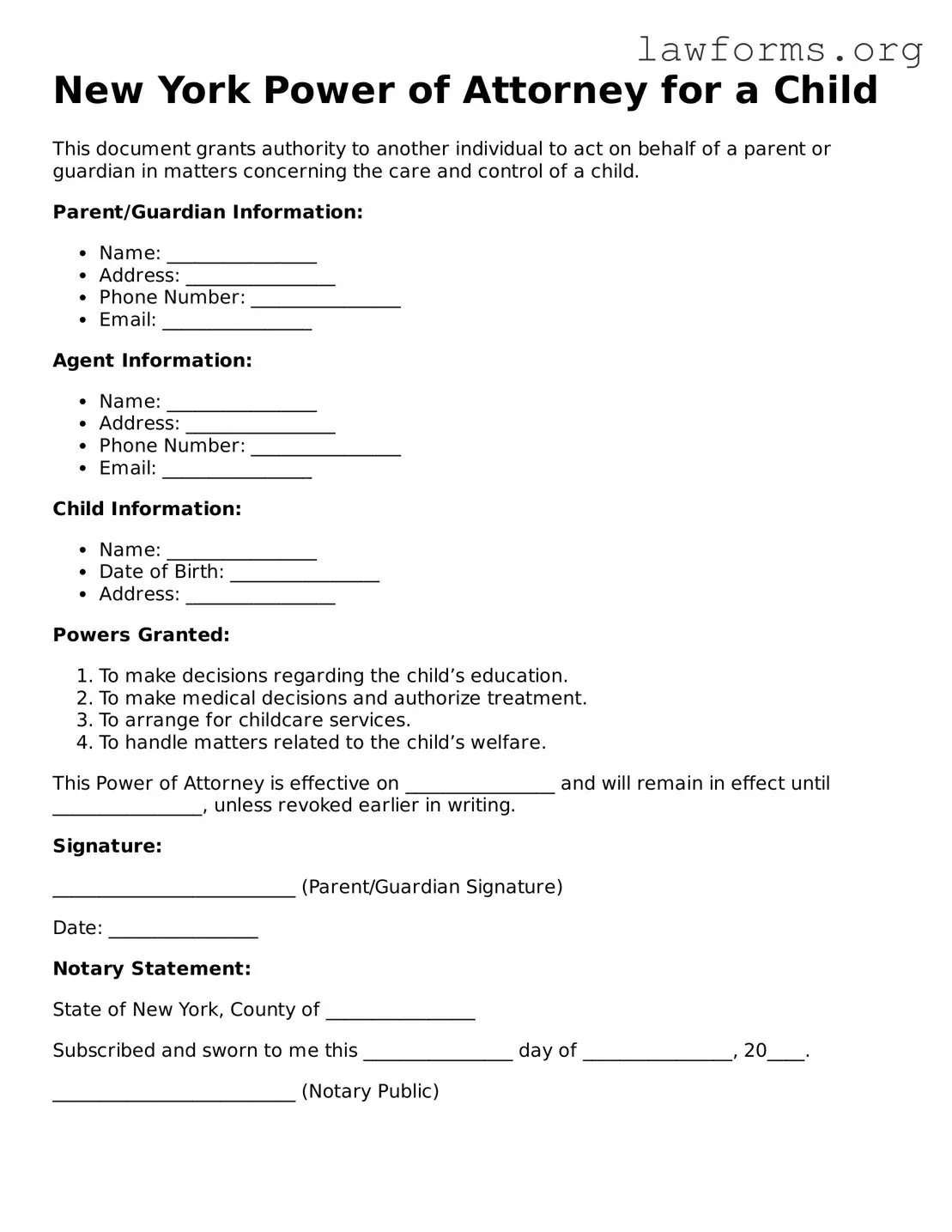New York Power of Attorney for a Child
This document grants authority to another individual to act on behalf of a parent or guardian in matters concerning the care and control of a child.
Parent/Guardian Information:
- Name: ________________
- Address: ________________
- Phone Number: ________________
- Email: ________________
Agent Information:
- Name: ________________
- Address: ________________
- Phone Number: ________________
- Email: ________________
Child Information:
- Name: ________________
- Date of Birth: ________________
- Address: ________________
Powers Granted:
- To make decisions regarding the child’s education.
- To make medical decisions and authorize treatment.
- To arrange for childcare services.
- To handle matters related to the child’s welfare.
This Power of Attorney is effective on ________________ and will remain in effect until ________________, unless revoked earlier in writing.
Signature:
__________________________ (Parent/Guardian Signature)
Date: ________________
Notary Statement:
State of New York, County of ________________
Subscribed and sworn to me this ________________ day of ________________, 20____.
__________________________ (Notary Public)
